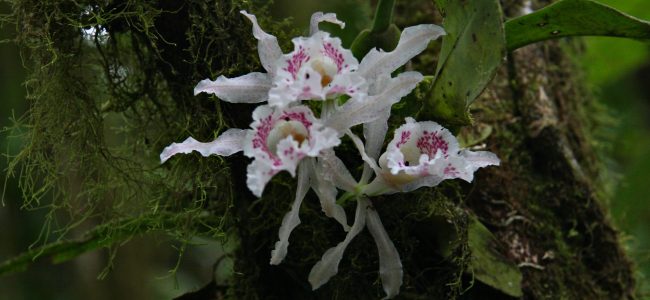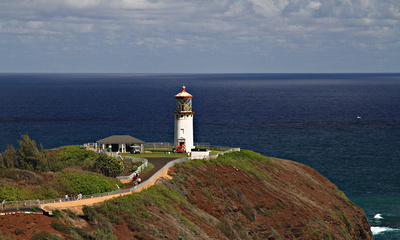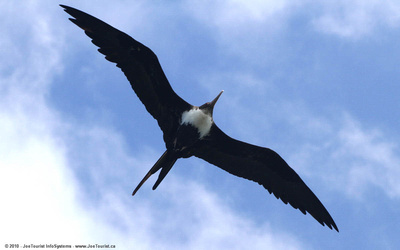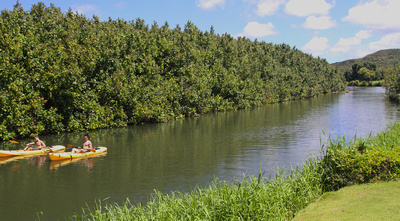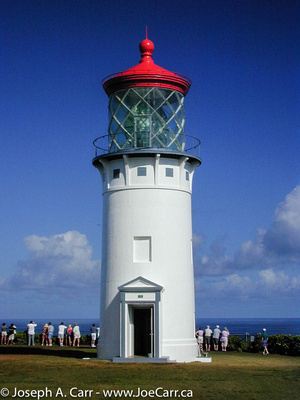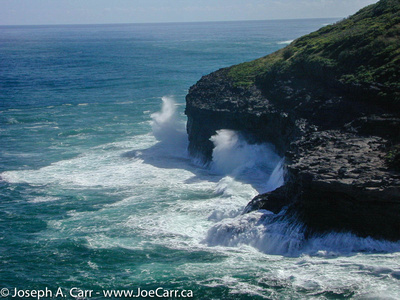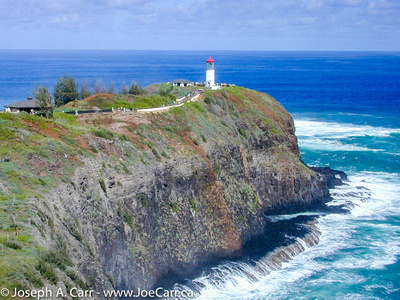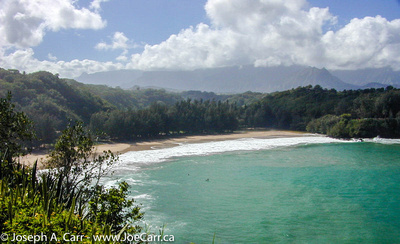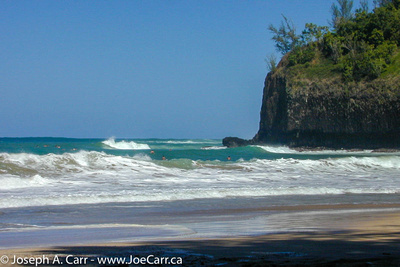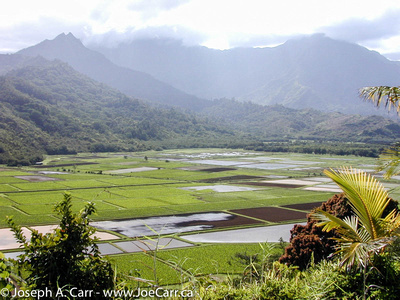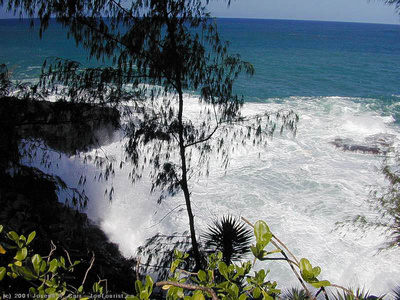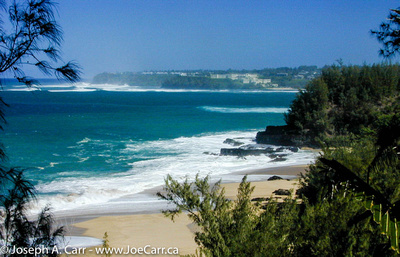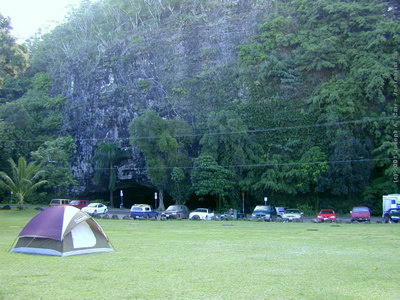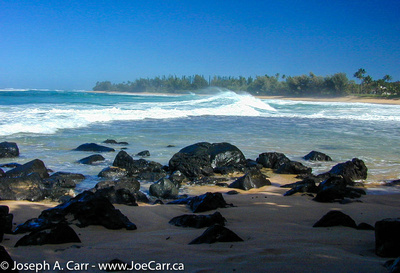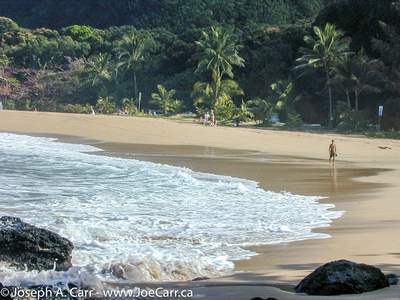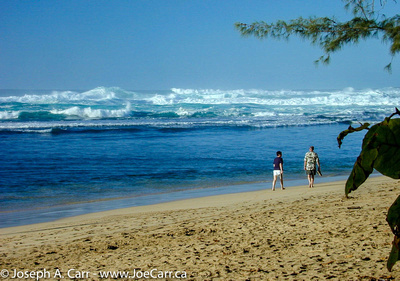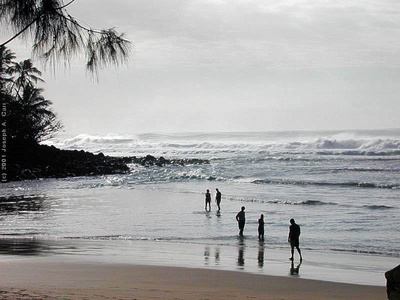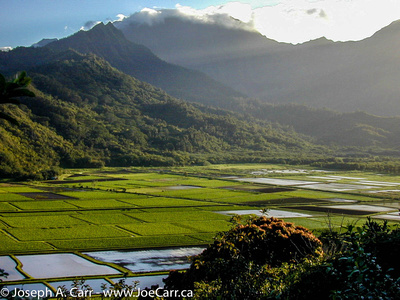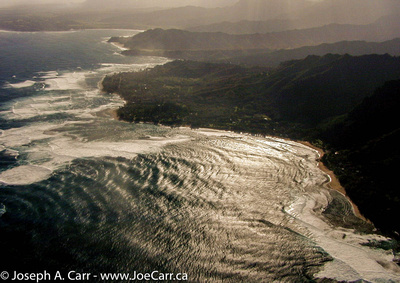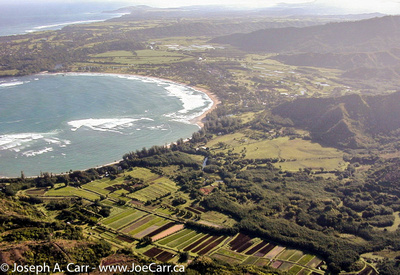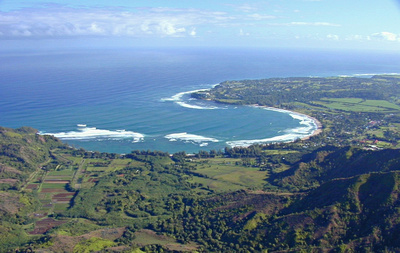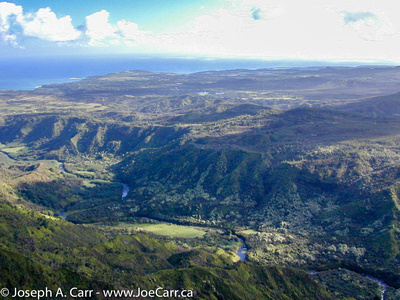Feb 26, 2009 – Thursday – La Ensenada “Star” Lodge & Carera Park, Puntarenas, Costa Rica
2009 Southern Skies Fiesta & Tamarindo Coast
Swiss Travel, the company our guide Jorge works for, originally planned to take us to a beach near Puntarenas today, however only a couple of people signed up and several of us suggested to both Jorge and Gary that we would much prefer a walk through Carera National Park. To their credit, Swiss Travel cancels the beach trip and substitutes Carera, providing each person pays the US$10 park entrance fee. Most of our group sign up for this trip, and we leave this morning on the bus. First stop is the bridge over the Tarcoles River to see the crocodiles. They are huge – about three metres long. The bus meets us on the other side and we drive the short distance to the park entrance, where we pay our entrance fee.

We walk along a relatively flat trail through the rain forest, which transitions from “dry” to “wet”. We are treated to two opportunities to see Scarlett Macaws (both nesting in trees). We also see Jesus Christ Lizards. Jorge flushes them out and they scoot across the stream – that’s how they get their name (walking on water). There are sandwiches and cold drinks waiting for us as we drive back to La Ensenada in the bus. After the hot temperatures in the rain forest, the air conditioned bus offers some welcome relief.
Afternoons at Le Ensenada are hot, so most of our group disappear to their cabins for siestas or adjourn to the pool for a refreshing swim. After having dinner at 5pm, we observe Venus and the thin Crescent Moon as they both set in the west at sunset – a beautiful sight. I’m tired after the hike in the midday heat, so I go to bed after dinner. I wake up at midnight fully refreshed and ready for our last night sky observing opportunity at La Ensenada.





